13 results in Australia in World Affairs
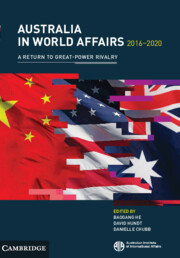
Australia in World Affairs 2016–2020
- A Return to Great-Power Rivalry
-
- Published online:
- 25 October 2024
- Print publication:
- 13 June 2024

Australia in World Affairs 1991–1995
- Seeking Asian Engagement
-
- Published online:
- 04 May 2024

Australia in World Affairs 2006–2010
- Middle Power Dreaming
-
- Published online:
- 04 May 2024
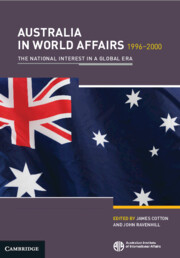
Australia in World Affairs 1996–2000
- The National Interest in a Global Era
-
- Published online:
- 04 May 2024
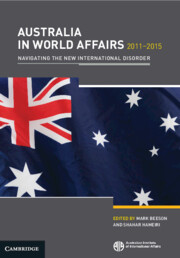
Australia in World Affairs 2011–2015
- Navigating the New International Disorder
-
- Published online:
- 04 May 2024

Australia in World Affairs 2001–2005
- Trading on Alliance Security
-
- Published online:
- 04 May 2024
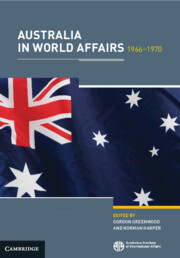
Australia in World Affairs 1966–1970
-
- Published online:
- 29 March 2024
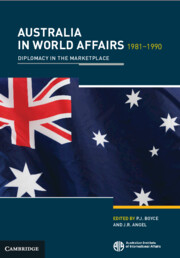
Australia in World Affairs 1981–1990
- Diplomacy in the Marketplace
-
- Published online:
- 29 March 2024

Australia in World Affairs 1976–1980
- Independence and Alliance
-
- Published online:
- 29 March 2024

Australia in World Affairs 1950–1955
-
- Published online:
- 29 March 2024

Australia in World Affairs 1971–1975
-
- Published online:
- 29 March 2024
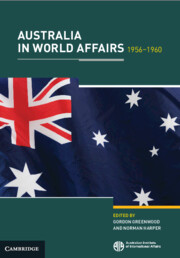
Australia in World Affairs 1956–1960
-
- Published online:
- 29 March 2024
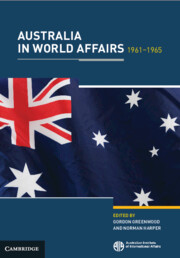
Australia in World Affairs 1961–1965
-
- Published online:
- 29 March 2024

